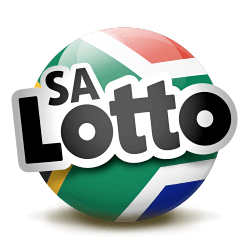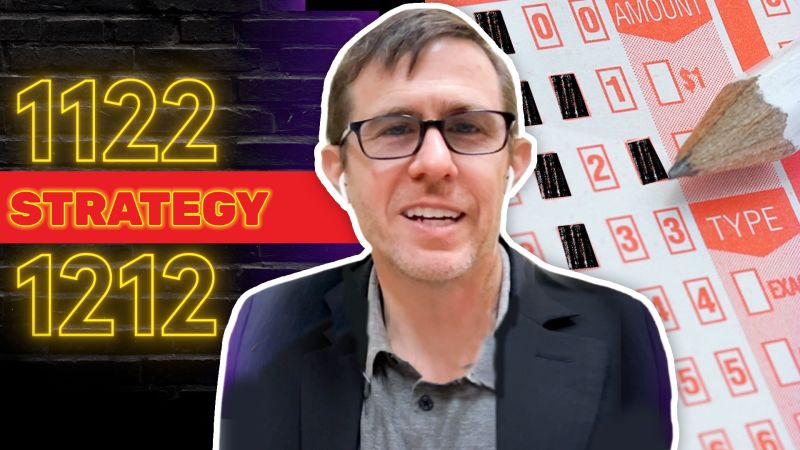If you’re tired of dreaming about winning the lottery and never seeing your numbers appear, then this lotto secret can change your thinking, and you’ll never play the lottery the same way again.
This article will discuss the mathematical strategies grounded in combinatorics and probability theory. This will be the most important knowledge you’ve been waiting for.
Let’s begin.
The Lotto Secret Revealed
In this article, we will discuss the three most important lottery game strategies. But before I give you the details, I want to reinforce that all these mathematical approaches come down to one key strategy—making informed choices.
The probability of winning depends on several factors, such as the number of tickets you buy, understanding combinatorial compositions1, and how you use probability to your advantage. Undoubtedly, luck plays a big role; however, certain strategies can help you intentionally choose better odds in your favor.
For example, you must purchase more tickets to boost your chances of winning the lottery because each ticket gives you an additional chance.2 Actually, this strategy is no longer a lotto secret as almost every lotto player knows about it. However, what isn’t widely known is that buying more tickets can be fruitless if you’re not doing it strategically.3
Many people avoid choosing certain patterns (like consecutive numbers) because they think these are less likely to win, or they worry about sharing the jackpot if they win with a common combination. But mathematically, every combination is equally likely to win.
The best way to approach the lottery is not through guesswork or superstition but by understanding its combinatorial and probabilistic nature.4 This is the most important lotto secret you have sought desperately for years. We will discuss these combinatorial and probability things later in more detail below.
What to expect
I urge you to forget statistics because the lottery is a finite system. We don’t apply statistical analysis when trying to understand the behavior of a finite game. Although probability and statistics are related, they are two distinct mathematical concepts. We use statistics when we deal with unknown variables. In the case of a finite lottery game, we have adequate information to understand how it works, and therefore, any questions we ask are probability problems to solve rather than statistical ones.
It’s important to note that a mathematical strategy does not guarantee a win. The lottery is still a game of chance, and luck plays a significant role.5 However, by using combinatorial and probability calculations, you can make more informed choices and get the best shot possible.
Now, let’s delve into specific combinatorial and probability strategies you can implement in your gameplay.
Lotto Secret #1: Choose Better Odds
Winning the lottery is very challenging probabilistically; the numbers don’t lie. The odds of hitting the jackpot vary depending on your lottery game, but they are always astronomical.
For example, the odds of winning the Powerball jackpot in the United States are approximately 1 in 292 million. In other words, you have a better chance of being struck by lightning or becoming a movie star than winning the Powerball.
Based on the odds and prizes of the Powerball game6, the probability of an individual ticket not winning any prize is 0.9598. Consequently, the chances of experiencing losses by buying nth tickets are this number raised to the power of n. For example, the probability that you lose twice in a row is 92%.
P(losing twice) = 0.95982 tickets = 0.92119859619034
Therefore, achieving a 50/50 shot at winning any prize may require purchasing approximately 17 Powerball tickets. However, this is no assurance of success. To attain a 99.99% certainty of winning a prize, buying about 224 tickets may be required. We determine this by calculating the complementary of P(losing), as shown below.
P(winning any prize) = 1 – 0.9598224 tickets
It’s important to understand that the odds favor the lowest-tier prize. In short, buying 224 Powerball tickets doesn’t guarantee you a jackpot. The odds of winning the Mega Millions jackpot are 1 in 302 million.7
You have better options
The odds of winning may seem discouraging, but they are a reality we must face. However, don’t lose hope just yet. While the odds may be astronomical for these huge lottery games, some are not too bad.
To give you a different perspective, the World Animal Foundation states that the odds of being killed in a shark attack are 1 in 4,332,817.8 Based on this figure, we can say you are more likely to win the Pennsylvania Treasure Hunt 5/30 game than being killed by a shark.
Truth be told, Treasure Hunt offers you 2000 times better odds than Powerball or Mega Millions. In this smaller lottery game, winning the jackpot is 1 in 142,506, and your overall odds of winning any prize is about 1 in 5.45, which eventually translates to an 81.65% probability of losing.9
But again, the odds of winning a lottery jackpot are still astronomical. But with the right choice of lottery game, you are giving yourself the best odds of winning.
So, the next time you play a lottery game, remember the first lotto secret is to choose your game wisely. Winning the lottery may be difficult, but you get the best shot if you make informed choices.
Fortunately, winning the lottery is not the worst odds in this world. According to Jonathan Mattingly, a Duke math professor, you have a better chance at the lottery game than anyone at picking a perfect NCAA tournament bracket.10
Lotto Secret #2: Ratio of Success to Failure
To illustrate the success-to-failure ratio, let me use the Tattslotto 6/45 game as an example.
In a 6/45 lottery game, there are 74,613 possible ways to select a combination where all six numbers are even numbers. On the other hand, a mix of three odd and three even numbers will produce 2,727,340 possible combinations.
Thus, within the 6/45 lottery game’s total of 8,145,060 combinations, we calculate the probabilities as follows:
P(6-even) = 74,613 / 8,145,060 = 0.00916052183
P(3-odd-and-3-even) = 2,727,340 / 8,145,060 = 0.33484590659
The calculations show that, on average, a combination of six even numbers occurs once in every 100 draws, whereas a balanced mix of three odd and three even numbers can occur 33 times in 100 draws.

Read How to Win the Lottery According to Math
This success-to-failure analysis concludes you have more favorable shots with a balanced odd/even combination. This selection strategy adheres to the principle of probability theory that a truly random lottery game doesn’t favor odd or even numbers.11
In short, you will seldom see a winning combination composed of purely odd or even numbers because a truly random game distributes the probability fairly between the two groups. Therefore, on average, winning combinations of balanced odd and even numbers dominate the lottery draws.
Success-to-Failure ratio in action
Let’s take a look at how this S/F ratio analysis will affect you if you play the 6/49 lottery game.
Imagine two lottery players participating in a 6/49 lottery game’s 2,080 draws over 20 years. One player purchases tickets with a success-to-failure ratio of 1:2, while another buys tickets with a success-to-failure ratio of 1:103. Therefore, over 20 years, the first player gets 693 best shots, while the other gets only 20 closer shots to win the jackpot.

Read How to Win Lotto 6/49 According To Math
What actual lottery results reveal
Of course, the best way to prove our probability calculation is to compare it with the actual lottery results. The expected frequency should closely match the observed frequency with sufficiently large draws to prove that our theoretical calculation is correct.
Below are charts of different lottery games proving that our probability prediction agrees with the historical lottery results. Notice how prediction closely agrees with actual results.

How to Win Tattslotto According to Math
The actual draws do not follow the theoretical prediction because probability is just a guide. However, notice how the game’s behavior doesn’t divert much from the mathematical expectation.

How to Win the Irish Lotto According to Math

How to Win the UK Lotto According to Math

How to Win Euromillions According to Math

How to Win Powerball According to Math

How to Win Eurojackpot According to Math

How to Win Mega Millions According To Math
When aiming for a lottery win, understanding the success-to-failure ratio of different combinatorial groups is crucial. You can calculate your options and reduce the chances of being wrong for the majority of the draws. This lotto secret doesn’t aim to manipulate the odds but rather understanding it to make better choices.
Proper combinatorial analysis
Ultimately, choosing the best combination hinges on being well-informed about all available groups and selecting the most dominant one.
However, the result might be significantly inconclusive when you deal with one analysis where you take odd and even numbers and forget that the number field also contains low and high numbers.
For example, the combination 1-2-3-4-5-6 is a balanced combination of 3-odd and 3-even numbers. However, understanding the behavior of lottery draws based on the law of large numbers, a truly random lottery distributes the probability across the entire number field.
In short, you will seldom see a winning combination consisting of purely low or purely high numbers. Therefore, a combination such as 1-2-3-4-5-6 cannot have a favorable success-to-failure ratio even though it contains a balanced mix of odd and even numbers.
The power of Lotterycodex Templates
To avoid contradiction, we should combine odd/even and low/high numbers into a single combinatorial and probability analysis, ensuring that the probability is fairly distributed across the entire number field.
For example, in a 5/50 game, we group numbers into the following sets:

Read The Winning Lottery Formula Using Math
The corresponding combinatorial and probability analysis results in a list of Lotterycodex templates that will guide you easily in the number selection process.
Take a look at this combinatorial group as calculated by Lotterycodex for Euromillions and EuroJackpot games:

Generated by Lotterycodex Calculator
As shown on the list of combinatorial groups for the 5/50 game format, only two templates dominate. If you play the Euromillions, choose templates #1 or #2. Based on the law of large numbers, these two templates will continue dominating as more drawing events occur. The same templates dominate the Eurojackpot game.

Lotto Secret #3: The Power of Lottery Wheel
One lotto secret that works is to participate in lottery pools. By joining forces with other players, you can pool your resources and increase your buying power. This allows you to purchase more tickets without breaking the bank.
Talking about buying more tickets, there are two ways you do it:
The first is randomly selecting numbers, which could be through personal choice or a quick pick machine that generates combinations with no mathematical strategy.
The second method involves using a lottery wheel, a mathematical tool to select number combinations based on combinatorial calculations.3 This system aims to trap the winning numbers strategically by covering a wider range of combinations within a selection of numbers.
Lotterycodex is a specialized lottery wheel that applies combinatorial math and probability theory. It helps players make informed choices by analyzing the success-to-failure ratios of different combinatorial groups.
This lottery wheel approach differs from random selection by offering a methodical way to trap the winning numbers, making it particularly appealing for those looking to bet wisely on lottery tickets.
Be an Intelligent Lottery Player
The lottery offers hope and a chance to escape the daily grind and live on our terms. Unsurprisingly, millions of lotto players take the shot at the tease of what if they win.
Truth be told, there are no secrets to winning the lottery because it is truly random.12 The odds are stacked against us, and the chances of hitting the jackpot are incredibly minuscule.
Face the odds, find the right strategy that works for you, and you might be the next big lottery winner. But remember to play responsibly.13 It’s time to crack the code and change your life!
So, can we crack the lotto secret and increase our chances of winning? Dive into the world of lottery odds and discover how balls behave in a truly random game using the tools of combinatorial mathematics1 and probability theory.11







